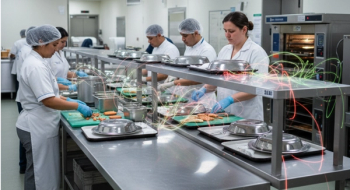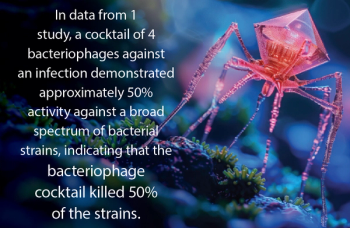
Pigs in Southern China Infected with Avian Influenza
Researchers report for the first time the seroprevalence of three strains of avian influenza viruses in pigs in southern China, but not the H5N1 avian influenza virus. Their research, published online ahead of print in the Journal of Clinical Microbiology, has implications for efforts to protect the public health from pandemics.
Influenza A virus is responsible both for pandemics that have killed millions worldwide, and for the much less severe annual outbreaks of influenza. Because pigs can be infected with both human and avian influenza viruses, they are thought to serve as "mixing vessels" for genetic reassortment that could lead to pandemics, and pigs have been infected experimentally by all avian H1-H13 subtypes. But natural transmission of avian influenza to pigs has been documented only rarely.
In the study, from 2010-2012, Guihong Zhang and colleagues of the College of Veterinary Medicine, South China Agricultural University, Guangzhou, People's Republic of China, tested 1080 21-25 week old pigs for H3, H4, H5, and H6 subtypes of avian influenza virus, and H1 and H3 subtypes of swine influenza virus. Thirty-five percent of the serum samples were positive for H1N1, and 19.7 percent were positive for H3N2 swine flu virus, and 0.93 percent, 1.6 percent, and 1.8 percent were positive, respectively, for the H3, H4, and H6 subtypes of avian influenza A virus. However, no serum samples collected in 2001 were positive for any of these viruses, indicating that transmission into swine was recent.
Given the recent transmission of avian influenzas into swine, "We recommend strongly that the pork industry worldwide should monitor the prevalence of influenza in pigs, considering their important role in transmitting this virus to humans," says Zhang.
Previously, novel reassortant H2N3 influenza viruses were isolated from US pigs, which "were infectious and highly transmissible in swine and ferrets without prior adaptation," according to a 2009 paper in the Journal of Molecular and Genetic Medicine by Wenjun Ma et al. Those viruses resembled, but were not identical to the H2N2 human pandemic virus of 1957.
Reference: S. Su, W. Qi, J. Chen, W. Zhu, Z. Huang, J. Xie, and G. Zhang, 2012. Seroepidemiological evidence of avian influenza A virus transmission in pigs in southern China. J. Clin. Microbiol. Online ahead of print 21 November 2012.
Newsletter
Stay prepared and protected with Infection Control Today's newsletter, delivering essential updates, best practices, and expert insights for infection preventionists.






